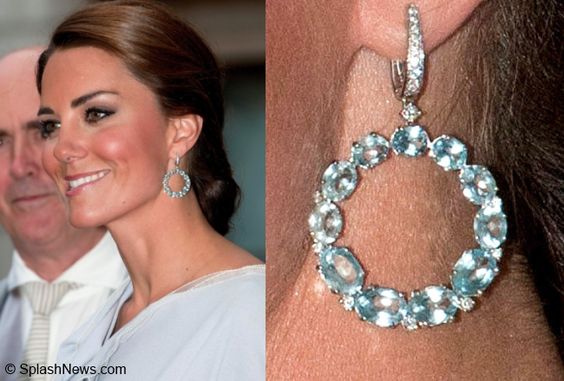Topaz at a Glance:
| Mineral Name: | Topaz |
| Colour: | Yellow, orange, brown, pink to red to purple red, blue, light green & colourless. Topaz are often heat-treated for colour enhancement. |
| Main Factor Affecting Value: | Clarity and size are the main aspects affecting value. |
| Inclusions: | Some imperfections can be visible. Imperfections at the atomic level in the topaz crystal structure can cause yellow, brown, and blue colour. |
| Birthstone: | Topaz is a November Birthstone |
| Some Diamond Mines: | Brazil, Utah (USA), Russia, Germany, Czech Republic, Italy, Sweden, Japan, Mexico, Australia |
World of Topaz
A majority of consumers know topaz as simply a blue gem. They’re surprised to discover that its blue colour is hardly natural: It’s caused by treatment. They might also be surprised to know that Topaz has so many more colours to offer gem lovers, including pinks and purples that accompany the finest sapphires.
Brief history
The name topaz comes from Topazios, the old Greek name for an island in the Red Sea, now called Zabargad. (The island never produced topaz, but it was once a source of peridot. Scholars trace the origin back to Sanskrit (an ancient language of India) and the word topaz or tapaz, meaning ‘fire’.
Largest topaz found:
The American Golden Topaz currently holds the record for the largest cut yellow topaz in the world. Sized at 22,892 carats (4.5785 kg in weight) and has 172 facets. The gem was cut from a piece of yellow topaz that was 26 lb in size. The original mineral was discovered in the Minas Gerais, in Brazil, and cut by Leon Agee over two years. In 1988, the American Golden Topaz was donated to the Smithsonian Institute, and put on display in the National Museum of Natural History in Washington, D.C. The price of the gem remains unknown.
Historical:
The Greeks believed that topaz jewellery gave them divine strength.
In Europe during the Renaissance (1300s - 1600s) people thought that it could break magic spells and dispel anger. For centuries, people in India believed that topaz worn above the heart assures long life, beauty and intelligence.
The name for imperial topaz originated in 19th Century Russia. The Ural Mountains were Topaz’s leading source, and the pink gemstone mined there was named to honour the Czar. Ownership of the gem was exclusively for the Royal Family.
Topaz: As a ‘talisman’.
It is believed that wearing a topaz pendant necklace enhances confidence and also restores lost energy. If worn above the heart, assures long life, beauty and intelligence.
Interesting facts: Topaz
1. Topaz varies in a wide range of colours including red, orange, peach, pink, gold, yellow, brown and clear. Often found in Brazil, Sri Lanka, Pakistan and Russia. Naturally pale to medium blue topaz is enhanced by irradiation to produce a more intense blue colour.
2. The most famous topaz is actually a colourless topaz that was originally thought to be a diamond. It is a 1680-carat stone known as the ‘Braganza Diamond’ set in the Portuguese Crown Jewels. Another topaz is in the Green Vault in Dresden, Germany; which has one of the world's most important gem collections.
3. It is a relatively hard stone, making it a good investment for jewellery; you will be wearing on an everyday basis. It rates 8 on the Mohs Hardness scale and is pretty resistant to scratching. However, like a diamond, it can be chipped or cracked with a hard blow. Please make sure that the sides of your stones are protected, and take care not to hit the stone along the edges.
4. There are a few different varieties of blue topaz that are marketed in the jewellery industry: Swiss Blue, London Blue, and Sky Blue. While Blue topaz can occur naturally, this is very rare. The vast majority of blue topaz is treated by taking colourless or lightly coloured topaz and using a combination of heat and radiation. These available gems used to command a decent price per carat, but due to over-manufacturing, the abundance of material has caused the cost of blue topaz to go down considerably.
5. Though it is the official birthstone of November, the alternative birthstone is golden citrine. Alternative birthstones that often differ entirely from the official birthstone, citrine and topaz are so similar that they are often confused. Citrine is a variety of quartz that comes in golden yellow or soft orange and brown tones. Topaz is a much more diverse option.
6. The most valuable colour of natural topaz is red. It is so rare that less than 1% of all gem-grade topaz rough exhibits this crimson colour. These stones have a reddish-orange tone and are known as Imperial Topaz. The red colouring is the most dominant at the top and bottom of the stone. The centre of the gemstone usually exhibits an orange body colour with pink undertones.
7. When most people think of topaz, they think of a light-coloured brown stone that is inexpensive. Though this is partially true, topaz also offers some high-quality natural-coloured varieties that can rival top-quality coloured sapphire in both beauty and value for money. Natural topaz comes in many shades of yellow, orange, red, green, blue, pink, and purple.
8. For thousands of years before gemologists and geologists could differentiate between minerals, all golden-coloured gemstones were called topaz. For instance, gems like golden citrine, smokey quartz and even peridot were considered to be topaz even though they are different minerals. It's understandable why because to the naked eye, it is almost impossible to tell the difference between golden citrine and a coloured topaz. Science eventually helped differentiate topaz, but it seems the average jewellery consumer is still being left behind; often confusing topaz with citrine. Despite the confusion, topaz has become prized among jewellery enthusiasts for its unique beauty and the variety of other colours it is available in.
Celebrities / public figures who wear this gorgeous stone/
- Kate Middleton sporting various Blue Topaz Jewellery


Diamond Treats is an online store brought to you by Satyan Jewellers, the home of luxury jewellery from a company with over 30 years within the industry. Based in London, Satyan Jewellers has grown to accommodate clients from around the world and is proud to bring to the market an unparalleled level of customer service, and vast collections of diamonds that stun, sparkle and shine in a wide variety of jewellery forms.


Sign In
Create New Account